
mcdonald
Notes from the Chair
The Dean of the College and the Art History Program present
a lecture
Ana Maria León
Massachusetts institute of Technology
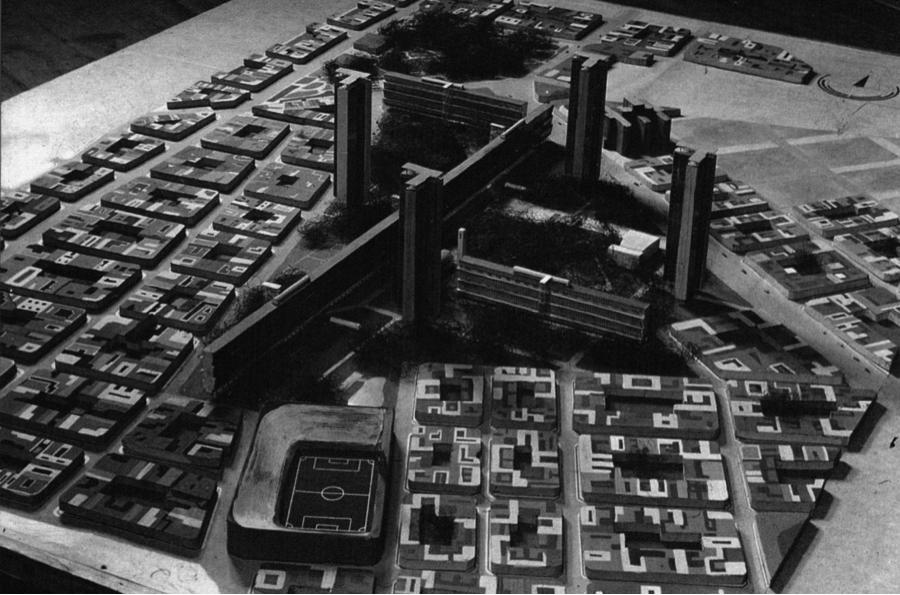
This lecture examines a series of texts, images, and architectural projects produced in 1930s and 1940s Argentina, and how they participated in the intellectual, poetic, and spatial construction of the city of Buenos Aires as both a real and imaginary site. Casa Amarilla, an unbuilt housing project designed by Antonio Bonet, brings together these various works in the context of the city’s population growth and the country’s unsteady politics. I argue Casa Amarilla countered the centralized power of the Argentinian state by shifting formal characteristics of monumentality and centrality from the elites to the disenfranchised masses, and inserting them into the city.
Monday, March 23, 2015
4:00 pm
Preston Theater

mcdonald
Notes from the Chair
The Dean of the College and the Art History Program
present
Olga Touloumi
Harvard University
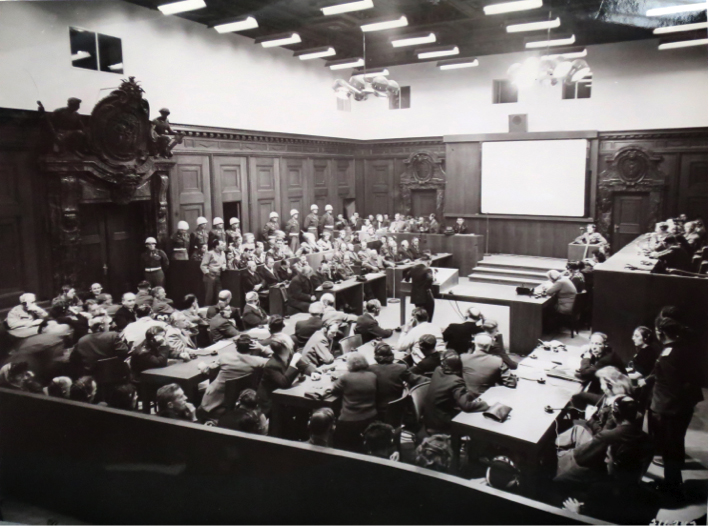 During four short months in the summer of 1945, the Office of Strategic Services, IBM, and landscape architect Dan Kiley prepared Courtroom 600 for the Nuremberg Trials. Planned as a “world spectacle,” the project required a wide mobilization of resources and technologies that crossed national and institutional boundaries. Scholars have extensively discussed the legal and diplomatic history of the International Military Tribunal, along with its implications for international law in the post-World War II period, but little attention has been paid to the position of the courtroom itself in this seminal event.
During four short months in the summer of 1945, the Office of Strategic Services, IBM, and landscape architect Dan Kiley prepared Courtroom 600 for the Nuremberg Trials. Planned as a “world spectacle,” the project required a wide mobilization of resources and technologies that crossed national and institutional boundaries. Scholars have extensively discussed the legal and diplomatic history of the International Military Tribunal, along with its implications for international law in the post-World War II period, but little attention has been paid to the position of the courtroom itself in this seminal event.
This lecture will unravel the role of design and architecture in the Nuremberg Trials, explaining that both served to produce international law as an integral component of the world organization that the United Nations announced. By looking into the series of projects that led to the final courtroom design, I will discuss the debates on representation, mediation, and participation that informed this interior. Ultimately, I argue, in the Nuremberg Courtroom designers and officials reconceived architecture as a mobile technology to transfer and implement models of legal space across expansive and contested networks of global communication.
Tuesday, March 31, 2015
4:30 pm
RKC 101

mcdonald
Notes from the Chair
 Congratulations to Art History Major Nic Viollet!
Congratulations to Art History Major Nic Viollet!
MEMORIA: CONSTRUCTIONS & INTERPRETATIONS
The History of Art Students’ Association (HASA) at University of Toronto invited undergraduates to participate in its second annual History of Art conference March 6th-7th 2015. Through the conference, the University aspired to have undergraduate art historians engage and explore their fields of interest in a supportive and challenging environment, whilst developing both academic and professional skills. The year’s theme focused on the constructions and interpretations of memory. The University “invited students to submit papers that explore diverse dimensions of this overarching theme, including but not limited to: The construction of real and imagined worlds, Collective and singular memories, Physical and psychological conceptions of memory, Problems of subjectivity, Representations and re-appropriations of a past. Nic Violett ’15 submitted and was accepted to present in the Third Session, chaired by Theresa Wang, his paper “Hon-En Katerdral: Audience and the Body.”

mcdonald
Notes from the Chair
Mira Rai Waits
University of California, Santa Barbara
“Producing the Prison: A Spatial History of Prisoners in Colonial India”
 Nineteenth- and twentieth- century histories of prisons in British India have followed three narratives. British imperial history presented prisons as exceptional infrastructural improvements essential to governance. In Indian nationalist history, prisons became synonymous with British rule and incarceration was determined to be a necessary stage of Indian resistance. Recent scholarship has emphasized the legal and ideological origin of the prison as well as the significance of medical practice. When examined as a whole, this body of material can provide valuable insights into the colonial Indian prison. However these histories fail to investigate the prison in terms of design, representation, physical space, and material experience, reducing the prison to a static concept—a site of pure ideology. This talk demonstrates that the prison was not a historical given, but rather a space continually altered, re-imagined, and even challenged by the people and objects experiencing, recording, and narrating its production. This paper advocates the recognition of space as an active and dynamic component of the history of Indian prisons.
Nineteenth- and twentieth- century histories of prisons in British India have followed three narratives. British imperial history presented prisons as exceptional infrastructural improvements essential to governance. In Indian nationalist history, prisons became synonymous with British rule and incarceration was determined to be a necessary stage of Indian resistance. Recent scholarship has emphasized the legal and ideological origin of the prison as well as the significance of medical practice. When examined as a whole, this body of material can provide valuable insights into the colonial Indian prison. However these histories fail to investigate the prison in terms of design, representation, physical space, and material experience, reducing the prison to a static concept—a site of pure ideology. This talk demonstrates that the prison was not a historical given, but rather a space continually altered, re-imagined, and even challenged by the people and objects experiencing, recording, and narrating its production. This paper advocates the recognition of space as an active and dynamic component of the history of Indian prisons.
Thursday, March 12, 2015
12:00 noon
Olin 102

mcdonald
Happenings at Bard
Carolee Schneemann
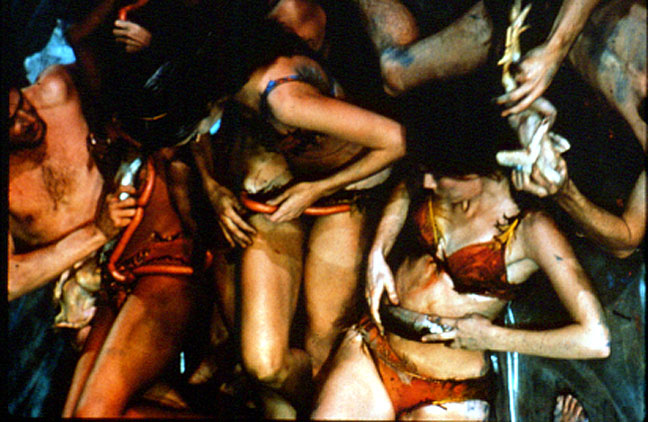
Meat-Joy
Carolee Schneemann, multidisciplinary artist. Bard College alumna, Class of 1959. Transformed the definition of art, especially discourse on the body, sexuality, and gender. The history of her work is characterized by research into archaic visual traditions, pleasure wrested from suppressive taboos, the body of the artist in dynamic relationship with the social body.
Thursday, March 12, 2015
Weis Cinema, Bard College
6pm

mcdonald
Happenings at Bard
Peter Christensen
Assistant Professor of Art History, University of Rochester
will give a talk
Modes of Transmission in Late Ottoman Architecture
This talk will examine the nature of architectural culture and production within the late Ottoman empire. In its last century of existence, the Ottoman empire bore witness to both a rapid dissolution of its territory and an extensive modernization of its cities and its infrastructure. This talk will examine these two phenomena, seemingly at odds with one another, specifically by looking at the ways in which various forms of transmission between Ottoman authorities, foreign powers, and internal minority populations shaped this milieu. The talk will demonstrate how ambiguity, as both a political and visual concept, gained credence in this context and established itself as a productive, rather than incidental, aspect of nineteenth century architectural culture.
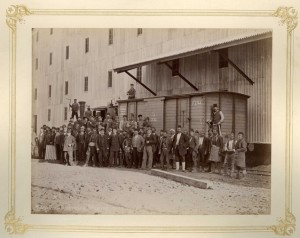
Guillaume Gustave Berggren, Railway workers of the Anatolian Railways, c. 1892. Niedersächsisches Landesarchiv, Wolfenbüttel.
February 27
1:30pm
Weis Cinema

mcdonald
Happenings at Bard
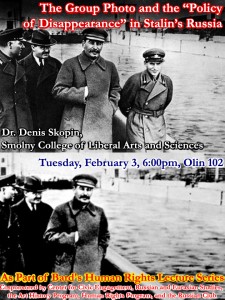 THE GROUP PHOTO AND THE”POLICY OF DISAPPEARANCE” IN STALIN’S RUSSIA
THE GROUP PHOTO AND THE”POLICY OF DISAPPEARANCE” IN STALIN’S RUSSIA
The aim of this lecture is to analyze from the political and aesthetic perspective the phenomenon of the elimination of the “public enemies” from group photos in Russia during the Stalin era. The analysis has as its empirical starting point photographs we have discovered in the course of research in the archives of several Russian cities. All these photos bear traces of editing, whether that be various marks such as blacking out, excisions or inscriptions left by the Stalin’s police.
Tuesday, February 3, 2015
6:00 pm
Olin 102

mcdonald
Student Opportunity

Please be aware of an opportunity to study abroad in Cuzco, Peru this summer, credited through Southwestern University, a national liberal arts college. The deadline for applications at the Office of Intercultural Learning is February 1. Here are some highlights:
- Two 3-credit classes (6 credits total). The first cross-listed as Philosophy, Religion, and History. The second cross-listed as Art History and Anthropology.
- Both classes taught by SU faculty, Dr. Omar Rivera (Philosophy) and Dr. Patrick Hajovsky (Art History), who know the city and culture very well.
- Students may apply for a Gilman scholarship, and certain financial aid will transfer.
Patrick Hajovsky
Associate Professor of Art History
Chair of Latin American Studies
Southwestern University
1001 E. University Ave.
Georgetown, TX 78626







